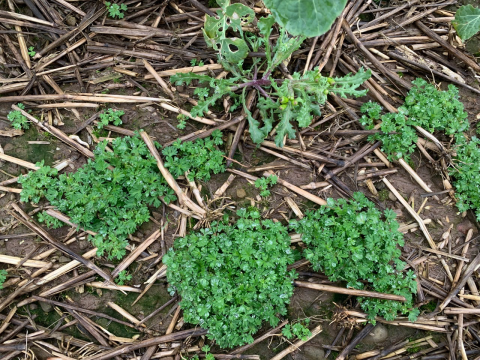Plants are key components of terrestrial ecosystems, providing the primary production upon which food chains are built. Different plant parts may provide a range of resources for associated fauna. Leaves may be browsed, while pollen and nectar provide resources for pollinating insects. Fruits and seeds are important for a large number of organisms. Plants have other functions apart from providing food for herbivores. They provide cover, reproduction sites and structure. From a human perspective they can provide sources of fuel, medicines, raw materials for many processes, protection, as well as aesthetic pleasure. Plants are a key part of biological diversity as well. Threats to plants from potential non-target impacts of pesticides may impact on biological diversity by eliminating populations. Those impacts may affect ecosystem function by affecting soil processes, nutrient cycling and trophic interactions via fauna, flora, microflora and fungi associated directly and indirectly with plants. That fauna can include invertebrates, reptiles, amphibia, mammals and birds.
Contributors
V. G. Breeze (ADAS Rosemaund, Preston Wynne, Hereford HR1 3PG)
E. J. P. Marshall (IACR Long Ashton, Long Ashton, Bristol BS41 9AF)
A. Hart (Central Science Laboratory, Sand Hutton, York YO4 1LZ)
J.A. Vickery (British Trust for Ornithology, The Nunnery, Thetford, Norfolk, IP24 2PU)
J. Crocker and K. Walters (Central Science Laboratory, Sand Hutton, York YO4 1LZ)
J. Packer (ADAS Wildlife and Environment, Burghill Road, Westbury-on-Trym, Bristol BS10 6NQ)
D. Kendall (Kendall BioResearch Services, 2 Birchdene, Nailsea, Bristol BS19 2QD)
J. Fowbert and D. Hodkinson (ADAS Newcastle, Kenton Bar, Newcastle-upon-Tyne NE1 2YA)


